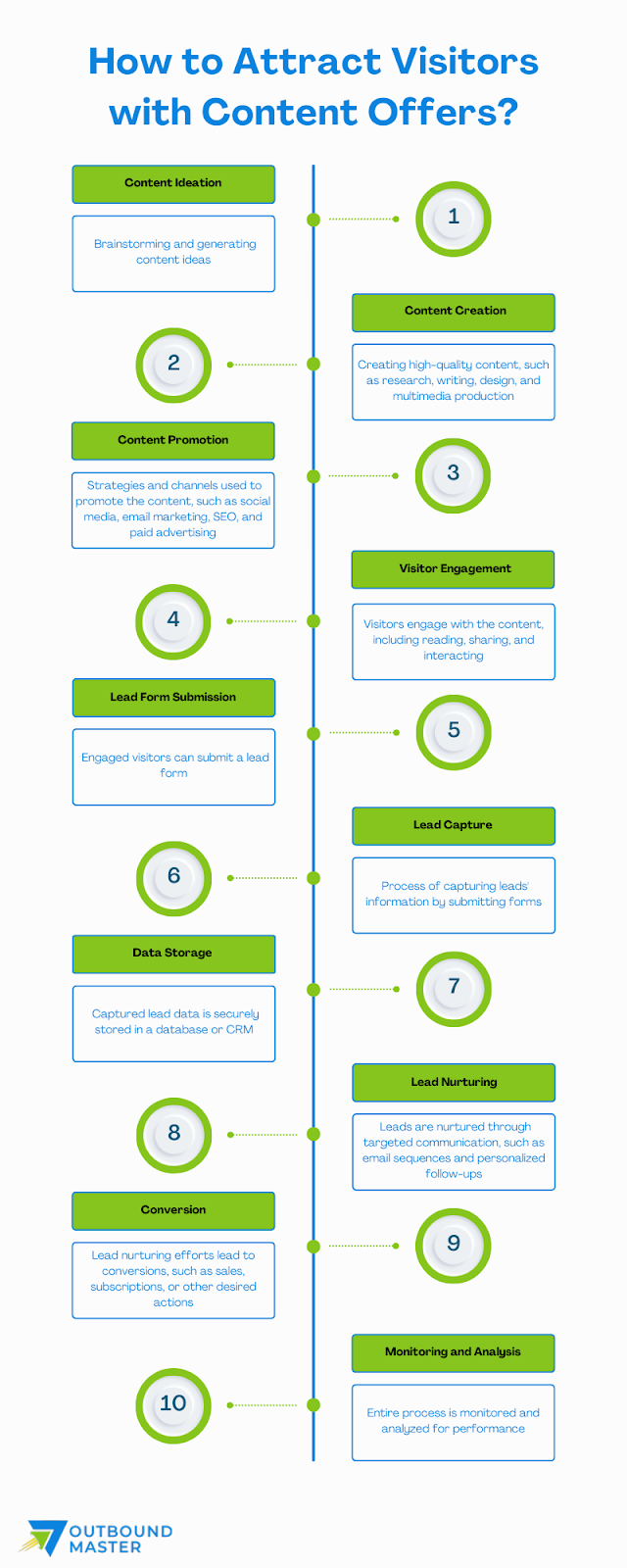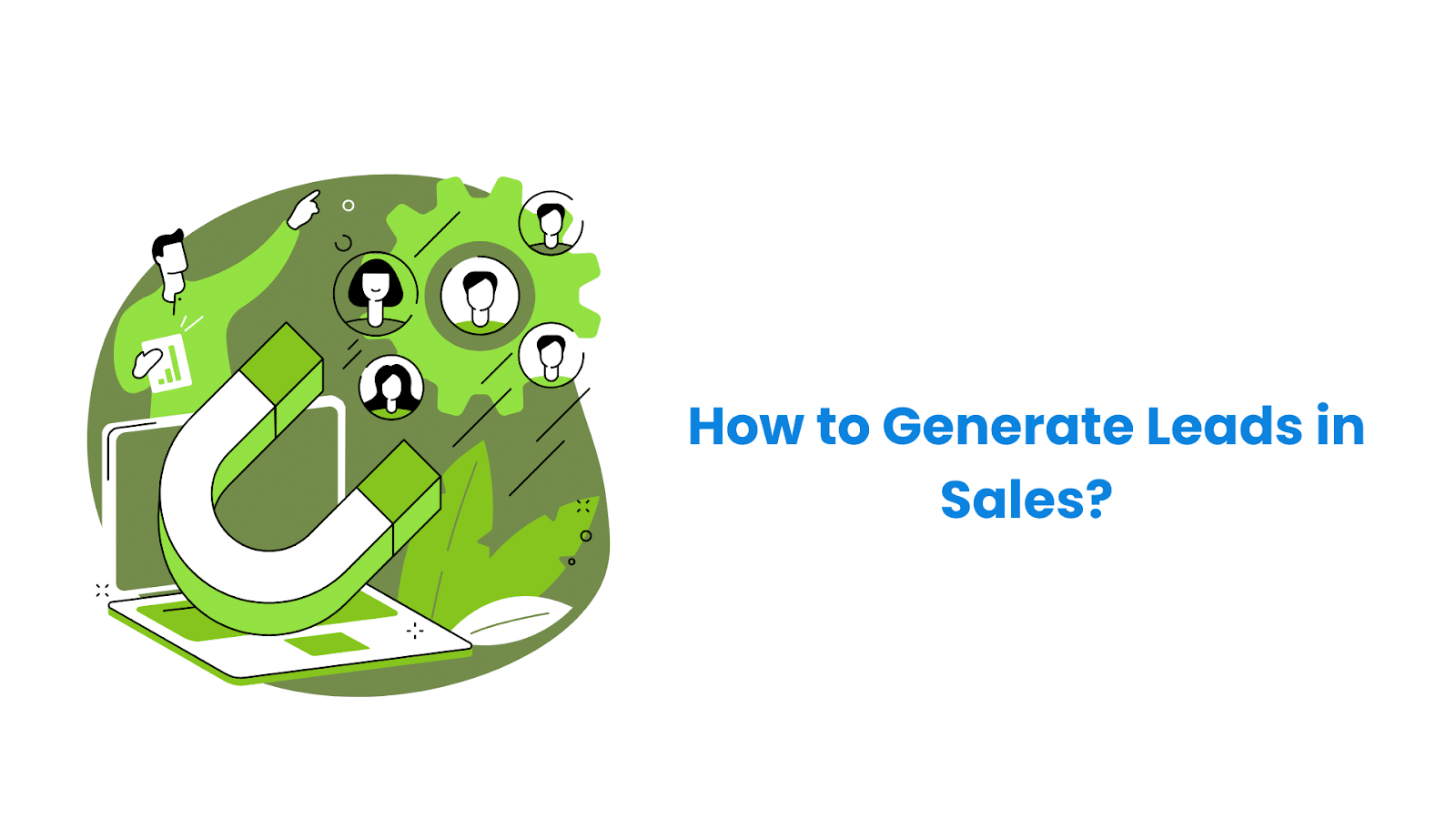How to Generate Leads in Sales – A Helpful Guide in 2024
Lead generation is the fuel that powers sales revenue. Without a steady supply of qualified prospects entering the pipeline, even skilled sales reps struggle to drive consistent sales.
To hit your revenue goals, sales teams must master the art and science of how to generate leads in sales.
Sales organizations live or die on the pipeline. Building a strong process for generating and nurturing high-quality leads is the key to equipping sales teams for sales success.
This guide will explore the proven lead generation strategies that set apart sales teams that consistently crush targets.
Nothing disappoints sales reps more than an empty pipeline. Having a steady drip of qualified prospects ready to engage fuels sales revenue like nothing else.
But manual lead generation tactics no longer cut it. Savvy sales leaders now automate and systematize how to generate leads to fill the funnel predictably. Here’s how they do it.
| Lead Generation Strategy | Data Required | Top Tool | Pricing | Applicability |
| Profile Ideal Prospects | Firmographic, CRM, Usage | Demandbase AI Engine | Custom Quotes | B2B Technology |
| Identify the Best Lead Sources | Campaign, Pipeline, Revenue | Bizible | Custom Quotes | SaaS |
| Create Content Offers | Buyer Personas, Surveys | Unbounce | $79+ per month | B2B Consulting |
| Promote on Social Media | Competitor Benchmarking | Sprout Social | $99+ per month | Ecommerce |
| Develop Targeted Landing Pages | Traffic Analytics, Search, Conversion | Instapage | $149+ per month | Martech |
| Nurture Leads via Email | Email, Website Activity | HubSpot Workflows | $50+ per month | Financial Services |
| Monitor Source Conversions | Traffic Source, Campaigns, Pipeline | HubSpot Sources Report | Bundle Pricing | Ecommerce |
| Call Hot Leads Quickly | Lead Scores, Alert Criteria | Salesforce High-Velocity Sales | $25+ per user per month | Hardware Technology |
| Personalize Follow-Up | Contact, Email Engagement, Intent | Outreach.io | Custom Quotes | Healthcare Software |
| Offer Exclusive Content | Traffic Analytics, Surveys | ClickFunnels | $97+ per month | Fitness Influencers |
| Track Lead Quality Over Time | Pipeline Stage, Win/Loss | Salesforce | Custom Quotes | Staffing |
Mastering How to Generate Leads: The Foundation
Profile Your Ideal Prospects
To be able to generate sales leads consistently, you have to master the very foundation of lead generation. This is to have a crystal clear understanding of WHO you need to target.
Your ideal prospects share common characteristics and attributes that make them more likely to require your product or service.
Start by analyzing your existing customers and past prospects that have converted to uncover patterns and commonalities. Look for:
- Firmographic attributes like company size, industry, location
- Behavioral and psychographic profiles
- Role, department, seniority
- Stated needs, pain points, and challenges
- Potential motivators and buying signals
Develop detailed buyer personas for each distinct prospect profile that buys from you. Give them descriptive names like “Cost-Focused COO” or “Expansion-Focused Marketing Manager”.
Outline their demographics, role responsibilities, goals, pain points, and objections. Note their preferred channels and content for outreach.
Identifying these ideal customer profiles allows you to tailor messaging to resonate with their needs and interests.
Look for patterns in the types of companies, roles, and buying objectives of your best customers.
Where do they congregate online? This helps focus your lead gen efforts on lookalike targets that resemble proven converters.
Refine your ideal prospect framework over time as you gather more data on favorable converter profiles. Identify prospect types to prioritize, as well as low-potential profiles to deprioritize.
Laser-targeting your campaigns allows you to generate sales leads more effectively. It also allows higher conversion rates in the long term.
Identify Your Best Lead Sources
Not all lead-generation channels and campaigns produce equal results.
To successfully generate targeted leads, you must analyze the quantity and quality of leads generated from each source to optimize your lead gen strategy.
Track metrics like:
- Number of leads captured
- Marketing qualified vs. sales qualified conversion rates
- Sales cycle length
- Win or loss analysis
- Customer lifetime value
Assess the significant categories of lead generation sources:
Inbound Lead Sources
- Website conversions from pages, blogs, content offers
- Organic search traffic and conversions
- Referral traffic from other websites or links
Outbound Lead Sources
- Cold calling and email outreach
- Tradeshows and events
- Webinars and nurture campaigns
Paid Lead Sources
- Pay-per-click ads (Google, Bing, Facebook, etc)
- Retargeting or remarketing ads
- Sponsorships
- Native advertising
Analyze lead volume, sales-qualified conversion rates, and cost per lead for each source or campaign. Identify channels delivering the most promising leads cost-effectively.
Double down on the top two or three lead gen sources demonstrating consistent ROI. Develop strategies to further optimize conversion funnels for these high-potential sources.
At the same time, assess whether underperforming lead generation channels can be improved or if they should be eliminated.
Calculate your marketing spend and dedicated resources against the revenue generated. Reallocate budget and staff hours from lower-performing channels into proven lead sources.
Continuously monitor marketing analytics reports to identify shifts and refine your channel mix over time. Optimizing lead generation sources, budgets, and team focus is critical to maximizing results.
Attract Visitors with Content Offers

Quality content remains one of the best ways to attract and engage prospects. Create compelling content assets like guides, e-books, templates, and checklists on topics your prospects care about.
Gate them behind lead capture forms on your website requiring name, email, and other key details in exchange for the download. Promote these offers across channels to capture visitor information.
Promote Content on Social Media
Raise awareness of your brand and content offers by engaging prospects where they spend time online. Identify 1-2 primary social platforms like LinkedIn or Twitter for your audience.
This is a great way to learn how to generate leads by building connections and promoting your content.
Post educational content daily while listening and responding to build connections. Share links to lead magnets and blog posts. Participate in relevant groups and discussions related to your industry.
Develop Targeted Landing Pages
Create dedicated landing pages for specific offers, services, or types of leads. Include relevant titles, copy, and graphics.
Make clear calls to action for filling out lead forms. Targeted landing pages are an effective method to understand how to generate leads.
Optimizing landing pages for key phrases can help improve search visibility and paid advertising conversion rates. Integrate forms to capture details for future nurturing.
Nurture Leads with Email Sequences
Email marketing automation helps you nurture prospects over time. It may sound like an old strategy but it’s still a great way to learn how to generate leads.
Segment your list based on factors like profile, behavior, and preferences. Set up targeted email sequences to provide value.
For example, a 6-touch sequence with relevant content for leads that downloaded a pricing guide. The track opens, clicks, and forms submissions.
Email nurturing is a powerful technique to master how to generate leads by staying top-of-mind and building relationships with prospects.
Monitor Conversions by Source
Track lead quality from each source using lead scoring to categorize contacts. Set criteria like page views, email engagement, and demo requests to gauge interest level.
Learning how to generate leads is an ongoing process, and monitoring conversions by source helps you optimize your efforts.
Regularly assess conversion rates and Cost Per Lead (CPL) by source. Optimize underperforming channels to improve results and reduce CPL.
Refine With Lead Scoring
Beyond initial contact, further qualify inbound leads with lead scoring models using additional criteria for sales readiness like:
- Matching ICP attributes
- Recency or frequency of site visits
- Content downloads and email engagement
- Requesting a demo
The route leads above a threshold score to sales as Marketing Qualified Leads (MQL) for prompt follow-up.
Call Hot Leads ASAP
Your sales team needs to respond to scored leads fast while interest is hot. Set up instant notifications and automated handoffs from marketing to sales reps when new MQLs are generated.
This is a crucial step in learning how to generate leads effectively.
Reps can immediately review lead details and reach out to schedule intro calls to further qualify. Calling within 5 minutes boosts connection rates by over 400%.
Provide Personalized Follow-Up
Sales reps should tailor their prospect outreach based on lead attributes and engagement data from marketing. Personalize messages using the prospect’s name, company, and shared interests.
Personalized follow-up is a key aspect of how to generate leads and convert them into customers.
Ask specific, contextual questions to show you understand their challenges. Provide advice and resources to build the relationship before any sales pitch.
Demonstrate you can guide them to a solution.
Offer Exclusive Content
Move promising MQLs further down the funnel by offering access to more detailed content like a solution guide, sample analysis, or limited-time trial.
Offering exclusive content is an important technique in mastering how to generate leads and nurture them effectively.
Gate exclusive assets behind a contact form to capture additional information for lead scoring. Outline the value proposition and next steps.
Track Lead Quality Over Time
Monitor conversion rates closely as leads progress to Sales-Qualified Leads (SQL). Review win or loss reasons and optimize lead nurturing processes to improve SQL conversion rates and align sales and marketing.
Tracking lead quality over time is essential when learning how to generate leads and improving your strategy.
Refine lead scoring rules and sales playbooks continually based on performance data to focus rep time on the warmest prospects only.
By implementing these buyer-focused lead generation strategies, sales teams can take control of pipeline development and consistently fill the funnel with high-quality prospects.
Monitor success metrics and iterate on underperforming areas for continual improvement. Continuous optimization is key to mastering how to generate leads in the long run.
Conclusion
Being able to generate sales leads successfully is crucial for sustained sales growth.
You can consistently fill your sales pipeline by profiling ideal prospects, optimizing lead sources, creating engaging content, and utilizing social media, targeted landing pages, and email nurturing.
Remember, continuous monitoring and adaptation are key to long-term success. Prioritize your prospects’ needs, build relationships, and guide them toward becoming loyal customers.
So, implement these strategies, adapt them as needed, and watch your sales revenue soar with a consistently filled pipeline.
Frequently Asked Questions
How can I identify my ideal prospects and create buyer personas?
The article mentions that you should analyze your existing customers and past prospects to uncover patterns and commonalities. Look for firmographic attributes, behavioral profiles, and more to develop detailed buyer personas.
What are the best lead generation sources, and how can I assess their performance?
The article provides insights into tracking and assessing lead generation sources, including inbound, outbound, and paid channels. It emphasizes monitoring metrics like conversion rates and cost per lead to optimize your strategy.
How can I effectively nurture leads through email sequences?
The article discusses using email marketing automation to nurture leads over time. It suggests segmenting your list and setting up targeted email sequences based on factors like profile, behavior, and preferences.
What is lead scoring, and how can it help prioritize leads for sales follow-up?
The article explains lead scoring and its role in categorizing contacts based on criteria like page views, email engagement, and demo requests. It highlights the importance of using lead scoring to identify marketing qualified leads (MQLs) for prompt sales outreach.



